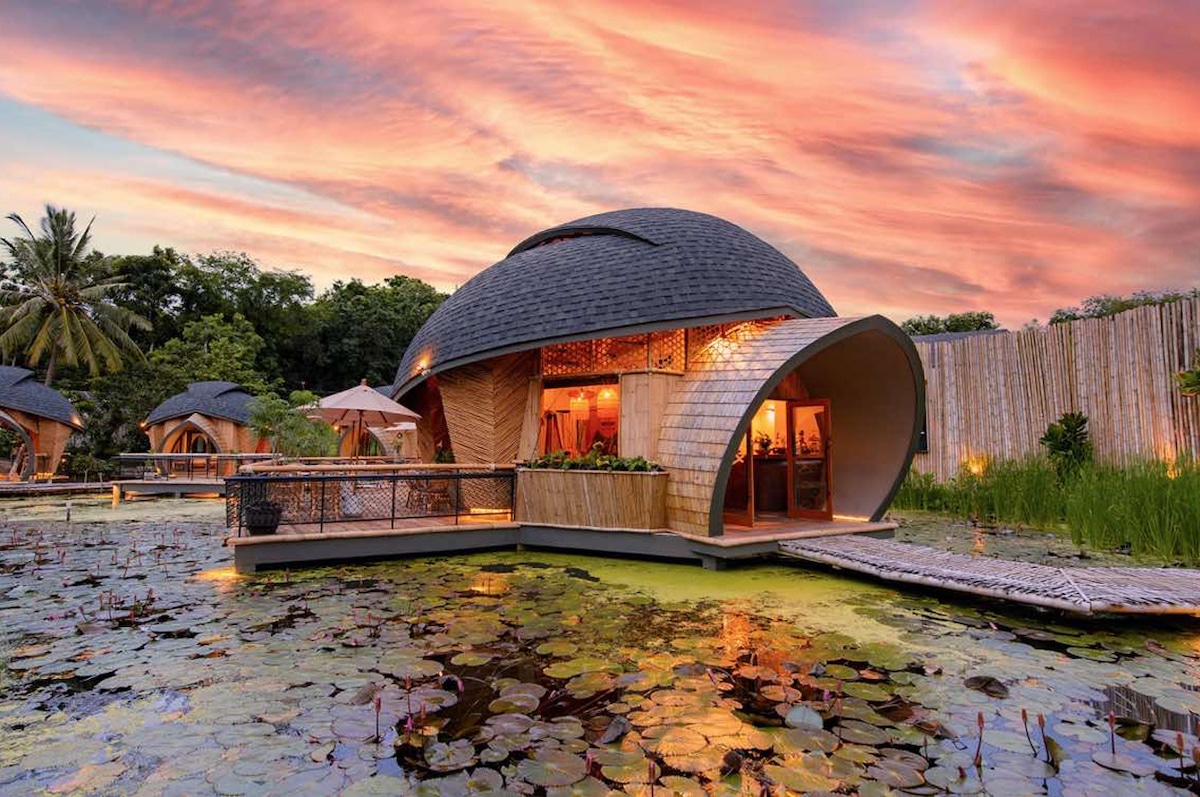
Photo: TonPixelPro
Located on the waters of Hua Hin’s Khao Tao Reservoir in Thailand, there is a hotel made up of five bamboo bungalows, all constructed with local materials. These series of guest houses in the eco-tourism destination—aptly known as Turtle Bay—are a bit more exciting than your average hotel room, though. The design itself harkens back to local folklore.
In Thai folklore, the turtles are a symbol of prosperity and good luck as they never move backward or turn to look back from their path. Turtles are also often found in Hua Hin. In fact, the name of the reservoir—Khao Tao—literally translates to Turtle Island. Architect Sarawoot Janseng-Aram of Dersyn Studio decided to honor the site’s connection to turtles in the design of the new resort.
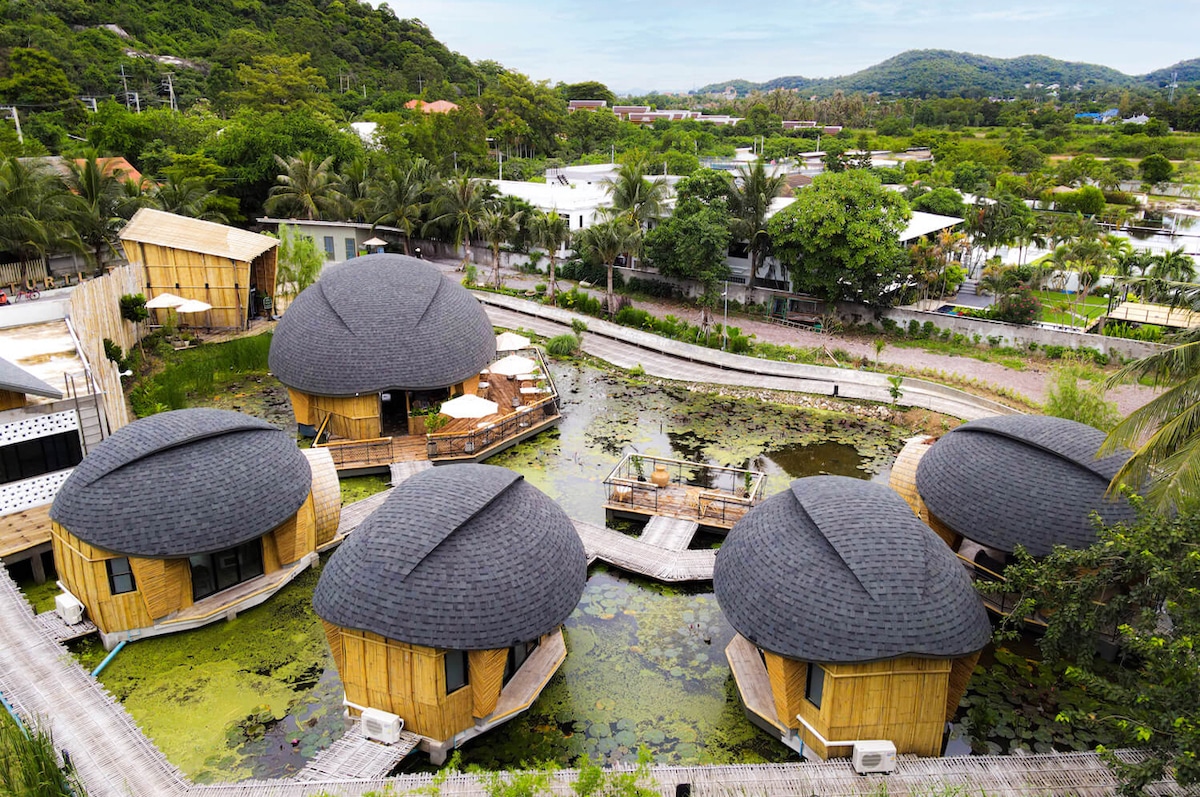
Photo: TonPixelPro
The roof of the structure looks like the protective shell of the animal and is covered with dark shingles. Jansaeng-Aram believes the texture and overlap of the material would best reflect the nature of the turtle’s shell. The architecture was also inspired by local building wisdom, from the abundant and sustainable practices of construction with bamboo to the method of cooling the interiors of the cabin.
One notable way the design combined sustainable methods of building with local knowledge is the usage of “poon-tum,” a local construction material commonly used to build ancient temples. The actual form of the buildings, as well as the special material choices, also helped to make the project more sustainable. Jansaeng-Aram created large interior spaces with high ceilings and windows placed to create natural ventilation to cool the rooms. At night, Turtle Bay is lit up using power generated by solar panels on some of the bungalow roofs.
Keep scrolling to explore the resort through photographs. For more information on this unique eco-tourism site, check out Turtle Bay’s website.
Thailand’s Turtle Bay eco-tourism destination is made up of five floating bamboo bungalows that celebrate local folklore.
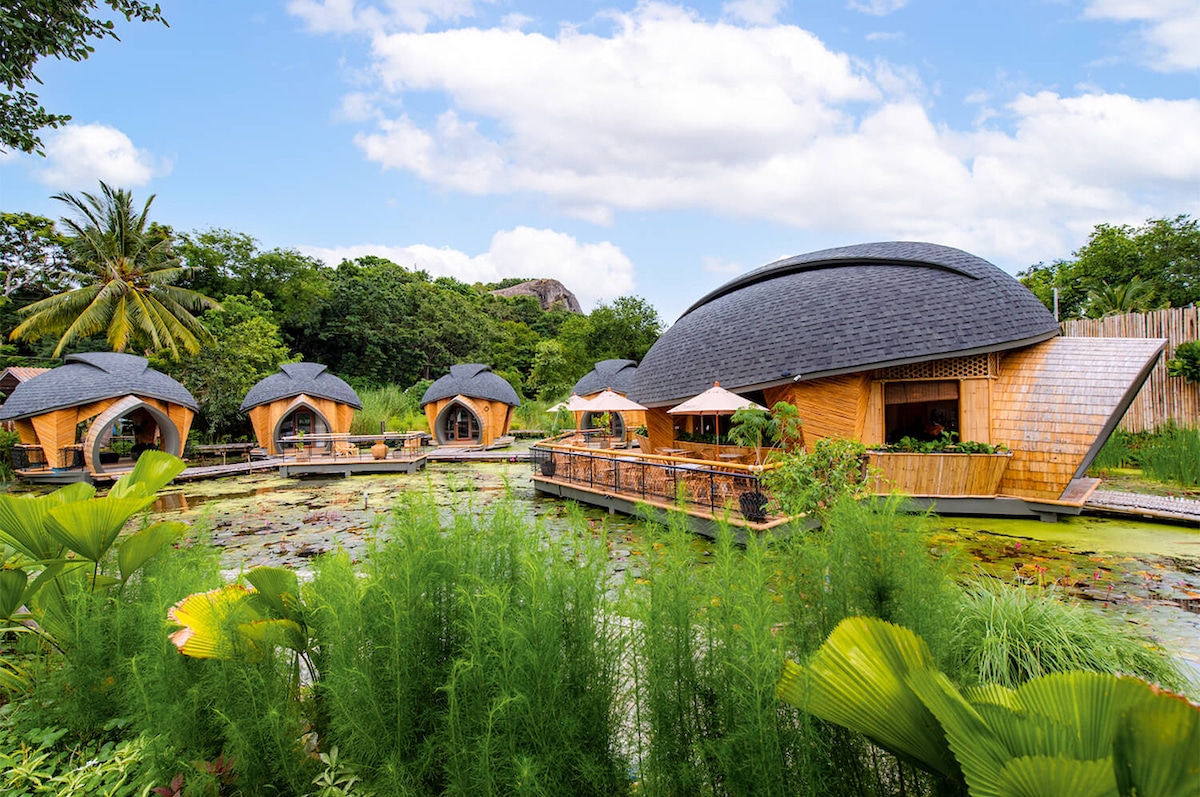
Photo: TonPixelPro
The design of each bungalow is inspired by the shape of turtles themselves.
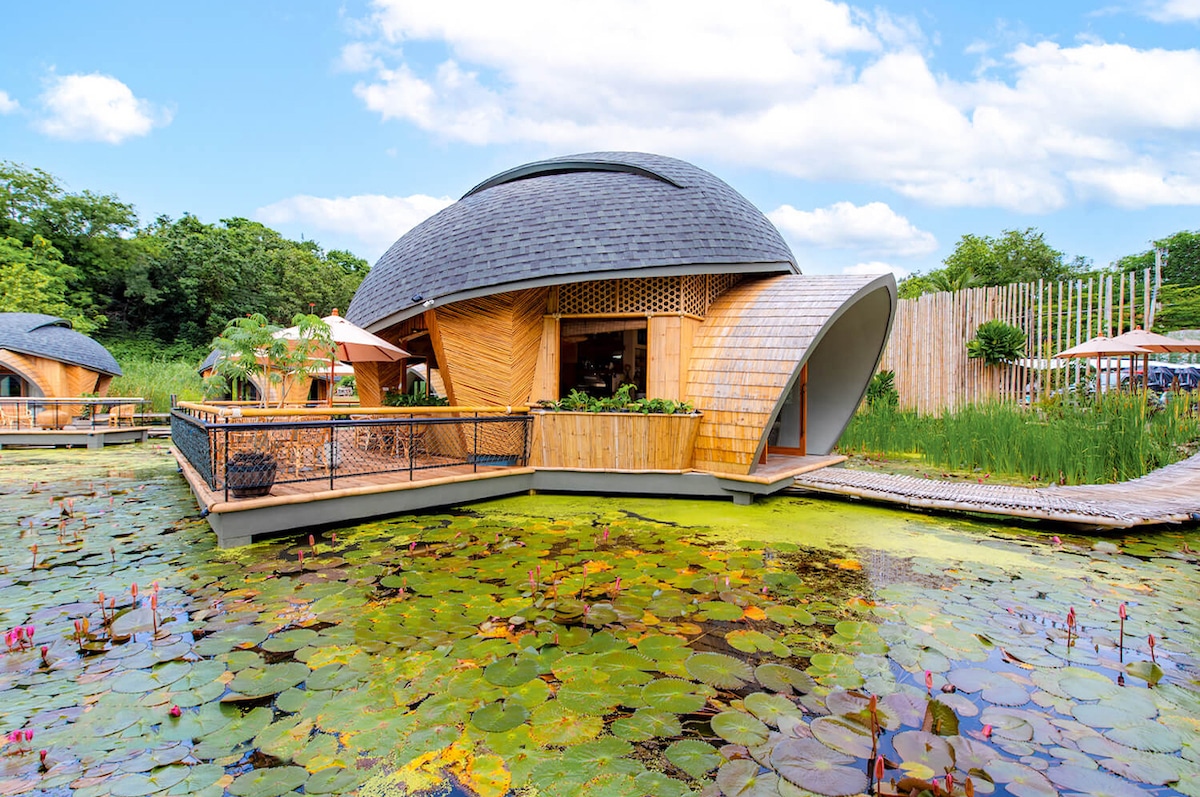
Photo: TonPixelPro
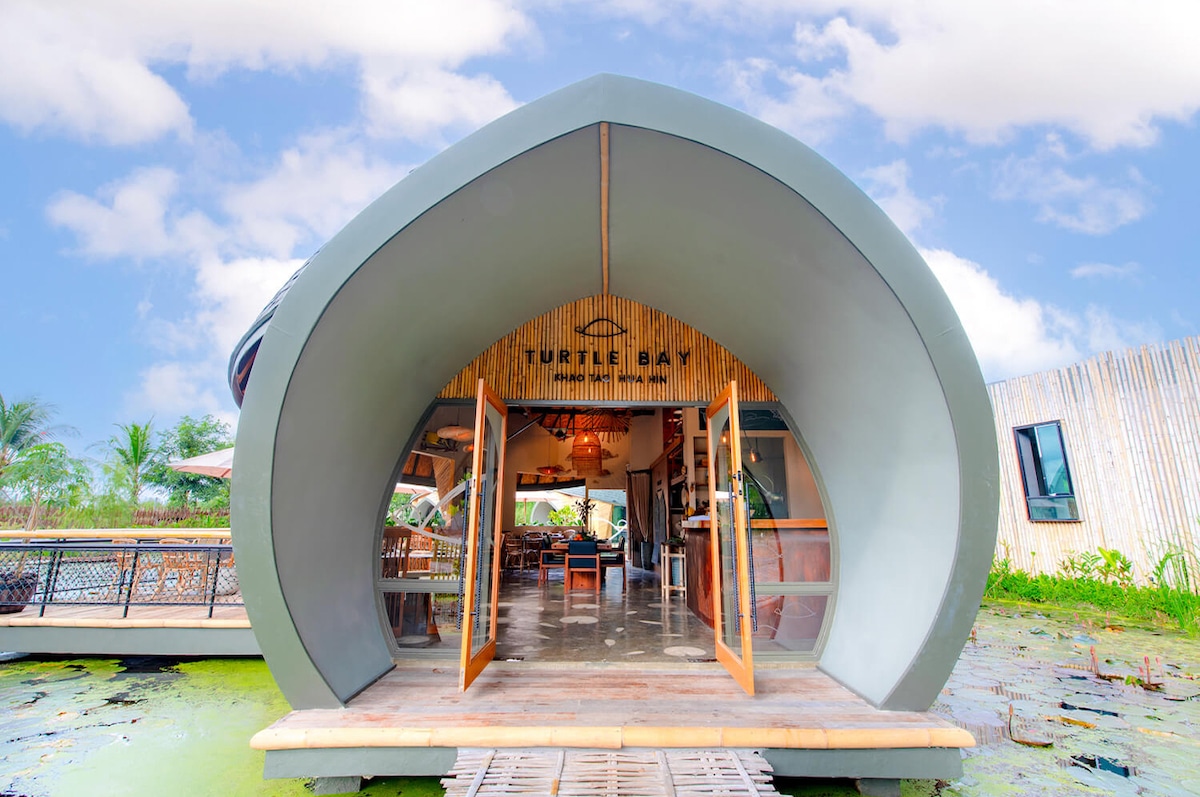
Photo: TonPixelPro
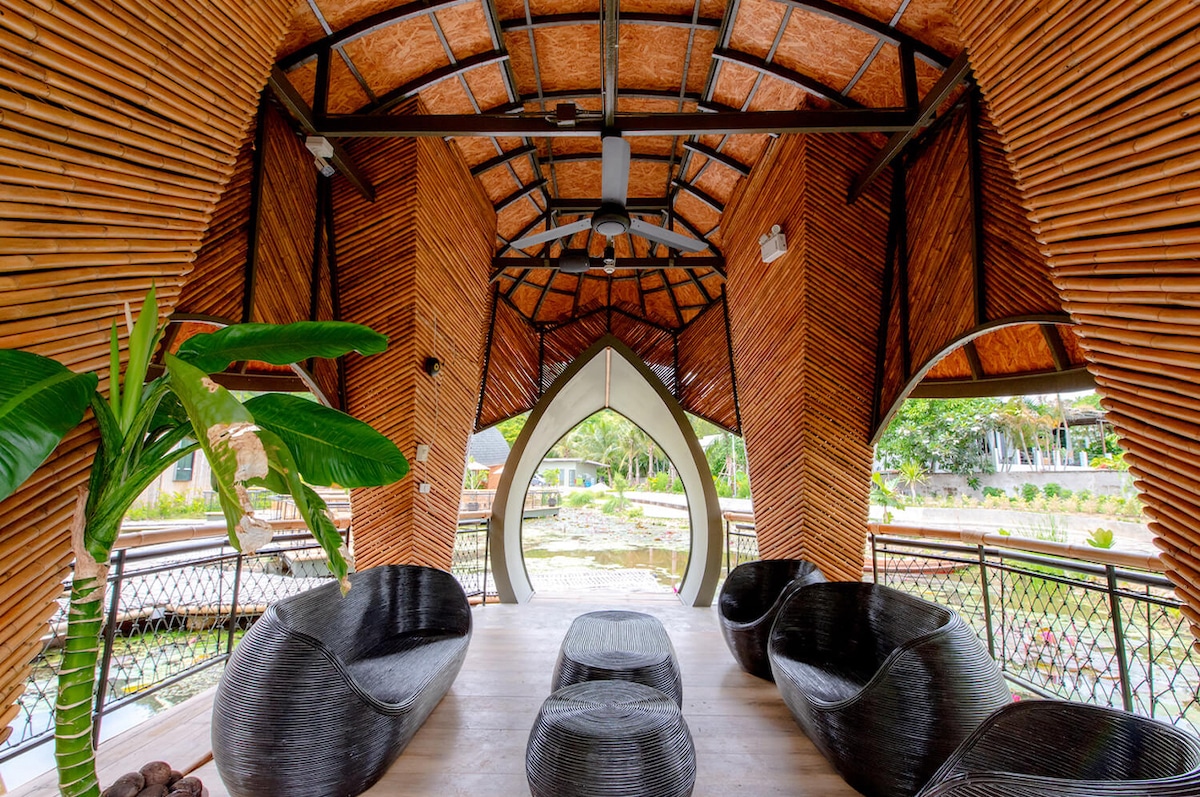
Photo: TonPixelPro
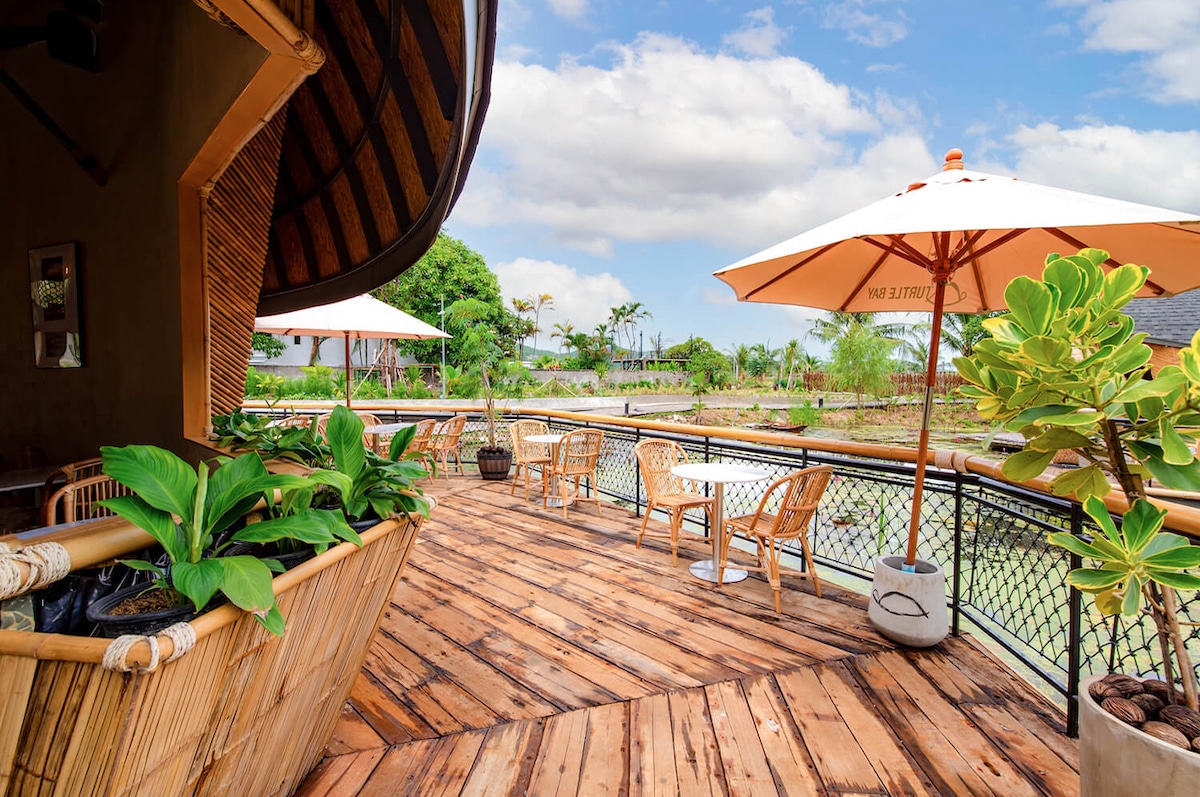
Photo: TonPixelPro
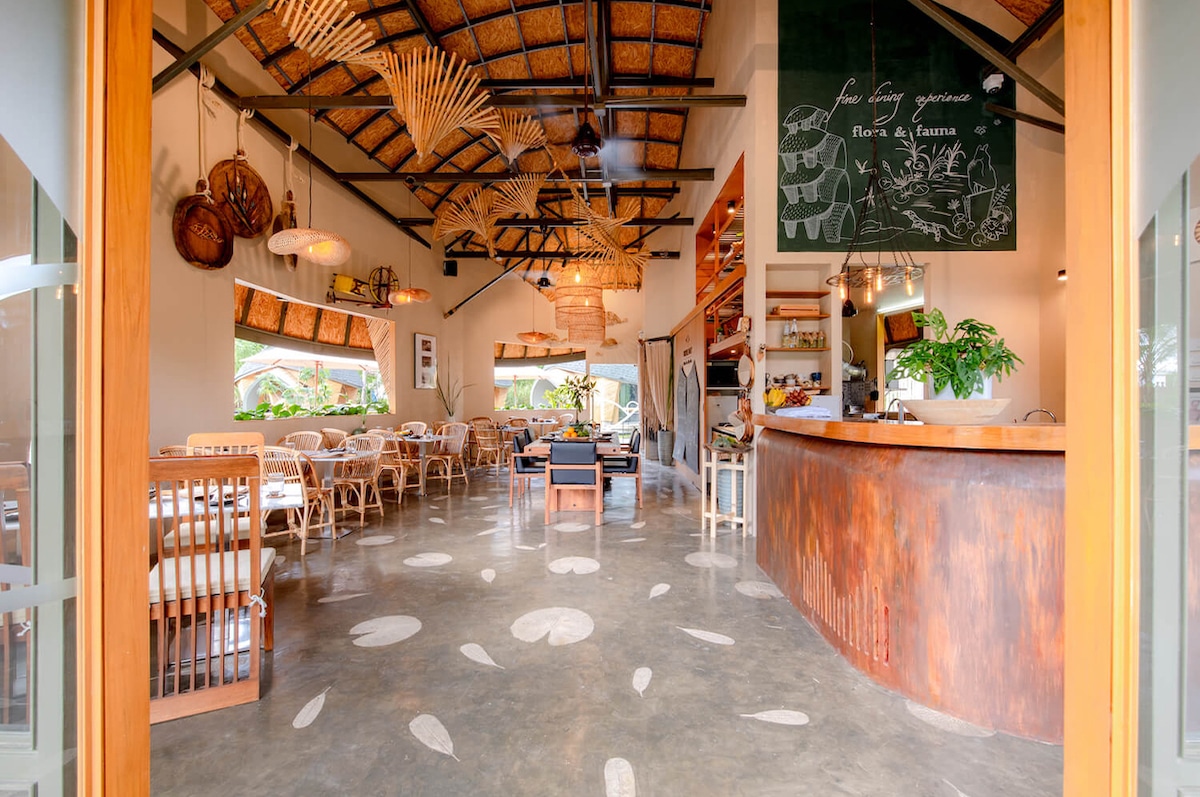
Photo: TonPixelPro
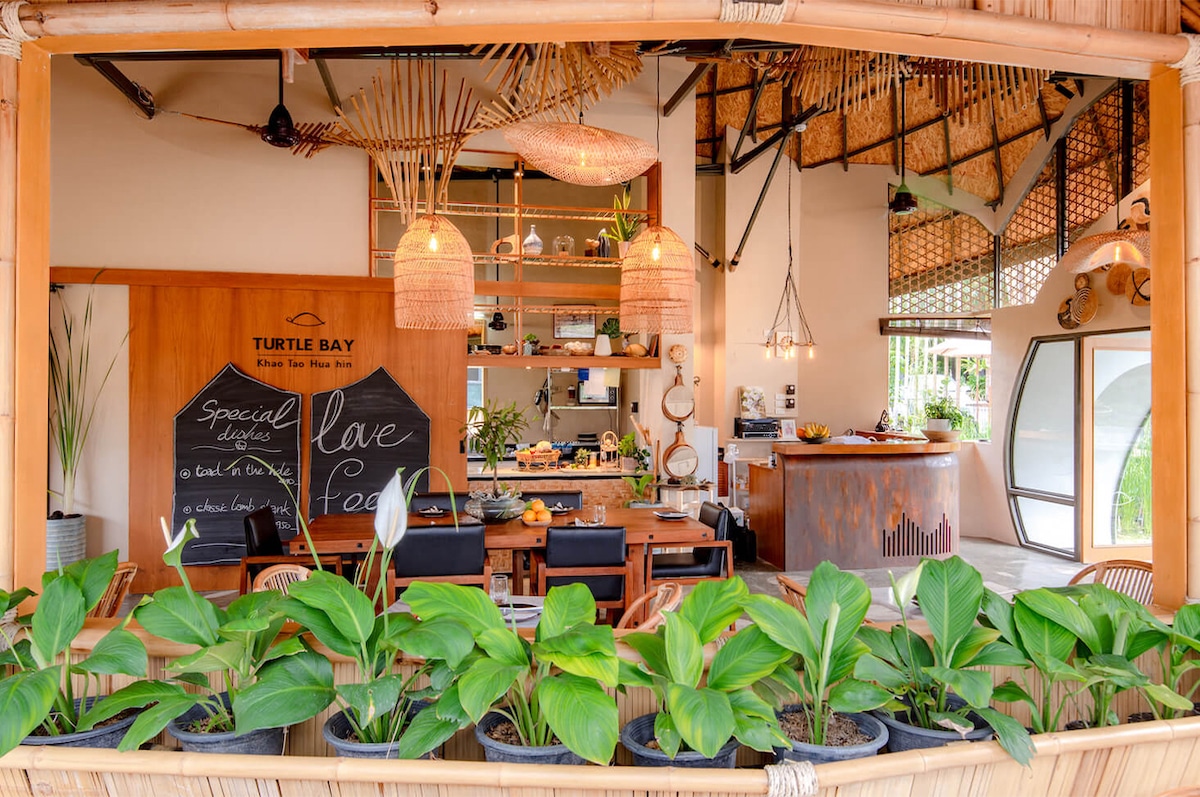
Photo: TonPixelPro
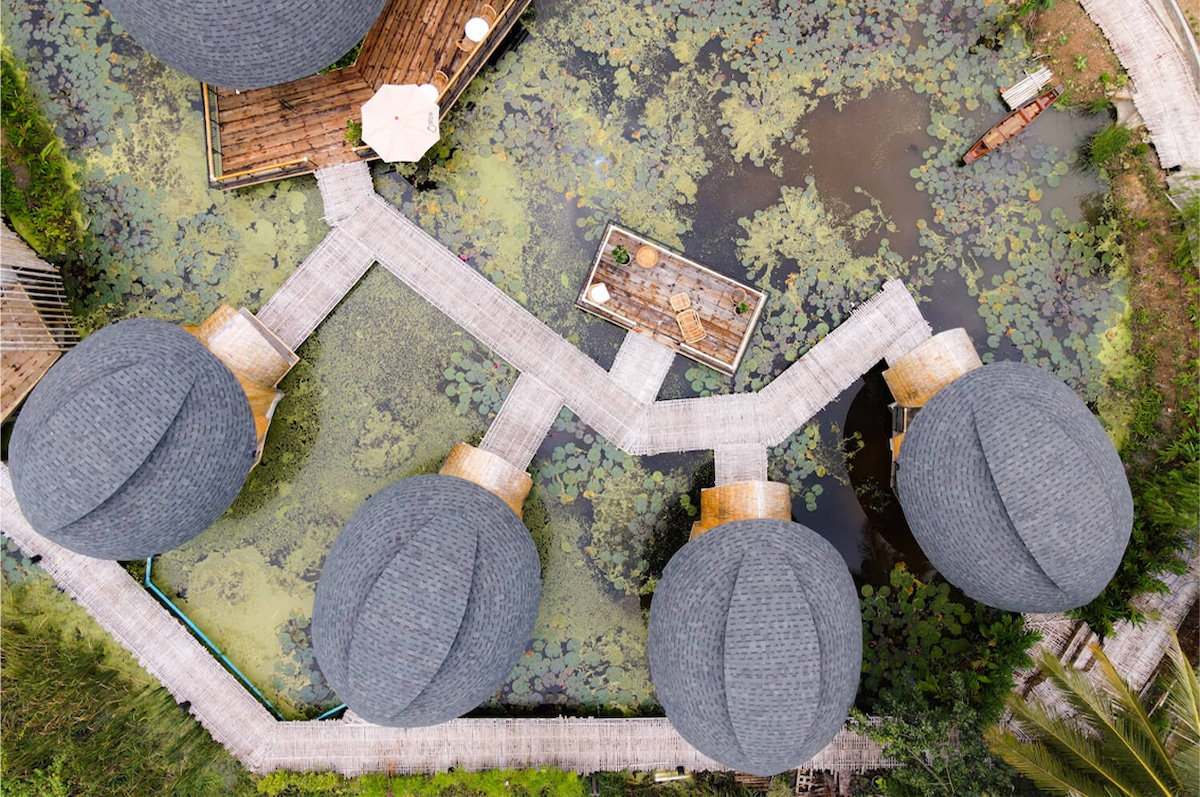
Photo: TonPixelPro
